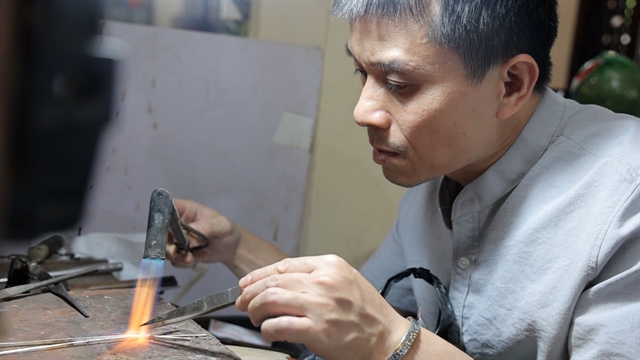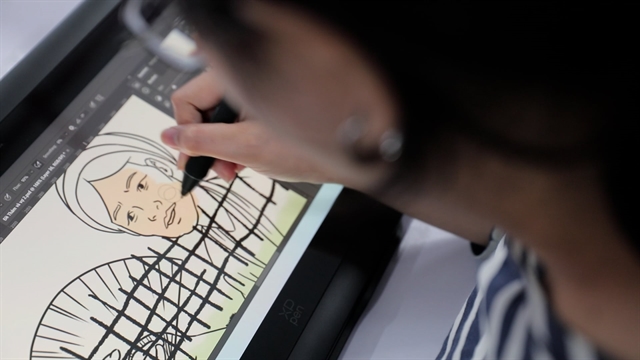 Talk Around Town
Talk Around Town

Hà Nội and all the big cities are already celebrating Christmas.
 |
By Nguyễn Mỹ Hà
Hà Nội and all the big cities are already celebrating Christmas. While St Joseph Cathedral has been lit up for a couple of weeks, in the heart of Christianity in Việt Nam, Nam Định Province, things will remain quiet until the Christmas weekend.
“Young people work far away, in Hà Nội or in the south,” a middle-aged man in Kiên Lao parish said. “When they get to go home for Christmas, they will get together to make the cave where Jesus was born and decorate their homes, and our church.”
Christmas in the cities has been commercialised to such an extent that it now coincides with shopping sprees.
Cheap Santa costumes are on sale right after the Mid-Autumn festival. Parent and teacher associations have been told to prepare gifts for their children a few weeks before Christmas day.
A Santa will go to the school and deliver the gifts. Then it becomes a matter of envy: Oh, X got a big gift but I only got a small one. But that moment passes quite fast when it comes to partying.
The most caring parents have aready pre-ordered snacks, fried chicken legs or wings, popcorn, yoghurt or crème caramel delivered to each table.
Christmas used to be celebrated quietly, sometimes even secretly, in Christian homes in Việt Nam.
Western missionaries brought Christianity to the country in the 16th century and it went through a long hard time because the royal courts banned the spread of new religious beliefs. The loss of control of the royal courts left the French running the country for their own benefit. Serious uprisings occurred among the people.
Western missionaries used the Latin alphabet to script today’s Vietnamese language, opening the door larger for transmitting Christianity, and later Western influence.
Christianity helped bring modern printing to the country and as a result, the birth and eventual development of newspaper journalism in Việt Nam.
But in the name of Christianity, they also did something many Vietnamese will not forgive.
The sacred Celestial Tower, built in 1057 under King Lý Thánh Tông was a 12-level brick and stone tower. The top level was made entirely in copper. The tower was one of the Four Bronze Treasures from the Lý dynasty. It was built on the land set aside for the Báo Thiên Pagoda. This was the sacred space where the kings paid homage to Lord Buddha many centuries before the French or other western missionaries came.
During French rule and the flourish of Christianity, a church was built, first in timber, then in brick and completed in 1886 on the space formerly occupied by the pagoda. It is today’s St Joseph Cathedral in Hà Nội.
In 2016, more than six million Vietnamese people belonged to Roman Catholic congregations.
New churches were also built in Nam Định, when Christianity first arrived in Việt Nam by seas.
Now Catholics and Buddists live under one roof. Christmas has left the homes, grown out of its religious roots and is now celebrated mainly as a commercial event particularly by young people.
In the cities, help is given to the less advantaged, warm clothes and food provided to those who live on the streets.
Some families use Christmas to have a family reunion, to foster love and care and enjoy a good time together.
In the countryside, it’s the homecoming time from a year working in distant cities and towns.
“Christmas is always a happy time,” wife of a Catholic man in Nam Định said. “Alhough I’m not Catholic and I pray to my ancestors, my husband goes to church and our village has a big party outdoors.”
She said they laid out tables on the village roads, provided lighting and food to share with others.
It’s a time of healing, not scratching old wounds. — VNS




